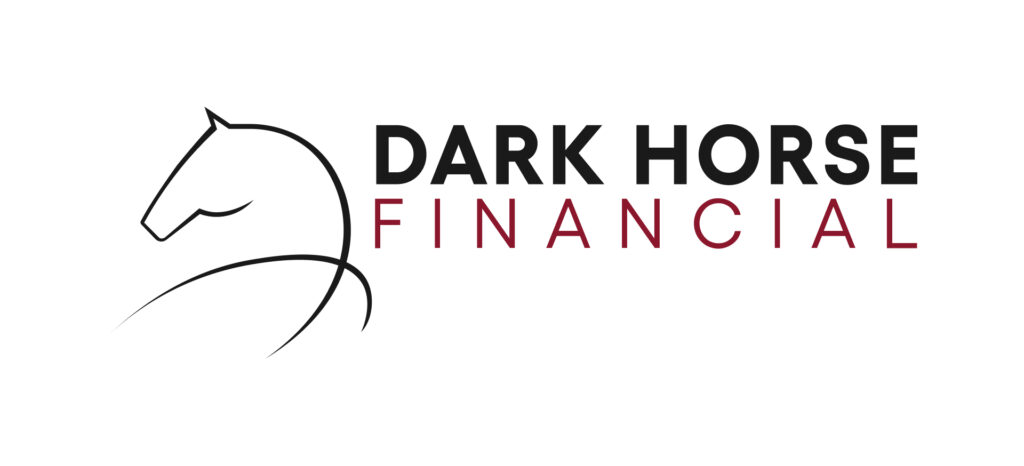A lot of Australians think that paying off their home loan is the best way to be financially stable. It’s a good idea to pay off debt, but homeowners often wonder if their money could be working harder somewhere else. Debt recycling is a way to deal with this by slowly changing home loan debt that can’t be deducted from tax into investment debt that can be. If you have equity in your home and are looking to the future, debt recycling can help you pay off debt and build wealth at the same time.
What Is Debt Recycling?
In Australia, debt recycling is a way to improve your financial situation over time by replacing your home loan debt (which you can’t deduct from your tax) with investment debt (which you can). This could give you additional funds that you can use to pay off your mortgage faster.
Debt recycling is the idea of using the equity in your home to borrow capital to buy income-generating assets, like stocks or managed funds. You then use the dividends, tax savings, and other savings to pay more on your mortgage. The main goal is to pay off your home loan or at least a big part of it while also having a lot of investments that make money.
Debt Recycling Example
Here’s an example to help you better understand this strategy:
Scenario:
- Home Value: $600,000
- Outstanding Mortgage: $300,000
- Equity in Home: $300,000
Step-by-Step Debt Recycling Process:
- Pay Off Your Mortgage: With the money in your offset account, you pay $100,000 on your mortgage, bringing the amount you owe down to $200,000 and your equity up to $400,000.
- Borrow the Same Amount: You borrow $100,000 against the higher equity in your home.
- Put the Money to Work: You can use the $100,000 to buy income-generating assets like stocks, ETFs, or managed funds, or to help pay for an investment property. You can deduct the interest from your tax because the money is being used to invest. Some of your debt is now tax-deductible.
- Repeat the Process: After a while, you can do the same thing again by paying another $100,000 to your mortgage (if you can, from tax breaks, savings, and dividends). Take out a loan against the equity in your home and use the money to get non deductible debt.
- Result: As time goes on and you keep investing and using the returns to pay off your mortgage, you “recycle” the debt from being non-deductible to being deductible.
Who Is Debt Recycling Suitable For?
Debt recycling is most suitable for individuals who:
- Have significant equity in their home.
- Are comfortable with a higher level of financial risk.
- Have a stable income that allows for additional borrowing and investing.
- Understand the long-term nature of the strategy.

Why Consider a Debt Recycling Strategy?
Debt recycling is attractive for several reasons:
- Tax Benefits: One of the best things about debt recycling is that it could help you save money on your tax. You can deduct the interest on an investment loan from your tax, but you can’t do the same for a home loan. You should always get help from an accountant or other financial professional when you recycle debt.
- Wealth Building: If you borrow funds to invest, you could build wealth faster than if you just pay off your home loan.
- Faster Mortgage Payoff: If you use your tax savings and investment returns to pay off your home loan, you might be able to pay it off sooner.
Risks of Debt Recycling
Debt recycling can help you build wealth and save on tax, but it also comes with risks that you should be aware of:
- Market Risk: The success of debt recycling depends on how well your investments do. If the investments don’t do well, you could end up with high-interest investment debt without any gains.
- You Need to be Patient: debt recycling is not a quick fix. You should only think about it if you’re willing to wait and be consistent, because it might take years before you see big changes.
- Requires Discipline: You will need to be financially disciplined with this strategy because you will have to keep paying your mortgage while also managing your investments.

How to Debt Recycle in Australia
Here are the steps to debt recycle effectively:
1. Check your financial situation
Before you start recycling your debt, take a look at your current financial situation. Are you okay with the payments you make on your current home loan? Do you have enough money coming in and going out to handle more debt?
2. Increase your equity
You need a lot of equity in your home to start debt recycling. Use a large amount of money (from your savings, offset account, or other sources) to pay off your mortgage and raise your equity. Now, you’ve lowered your debt that you can’t deduct.
3. Use the equity in your home to get a loan
You now have equity in your home, so you can borrow the same amount that you paid off. For example, you could use $100,000 of your savings to pay off your mortgage. You should also get a $100,000 loan backed by the equity in your home.
4. Make smart investments
Put the money you borrowed into assets that will make you money, like stocks or rental properties. The most important thing is to make sure these investments fit with your financial goals and how much risk you’re willing to take. You made your debt deductible by doing this.
5. Pay off the home loan with savings, tax savings, and investment income.
Now, pay off your mortgage again to start the cycle over. Pay your mortgage with your savings, the money you make from your investments, and the money you save on tax.
6. Do the cycle again.
Borrow again against your increased equity and invest the money to start the process over again. You keep borrowing, investing, and paying back until your investment debt is equal to your non-deductible home loan debt.
7. Keep an eye on things and make changes
Debt recycling is a long-term plan that needs to be watched closely. Financial markets are unpredictable, so it’s important to change your investments if you need to in order to lower your risks. Make sure to talk to a financial advisor on a regular basis to make sure that the strategy is still in line with your goals.
Debt Recycling Australia: Key Considerations
Before utilising this strategy, here are some factors you need to consider:
- Comfort with Risk: When you recycle debt, you invest funds that were borrowed, usually in things like stocks or real estate. These markets can go up and down, and you could always lose money. It’s important to think about how you deal with money problems before you start. This plan might not be right for you if a drop in the market would keep you up at night.
- Knowing your investments and goals: It’s not enough to just borrow money to invest; you also need to know where that money will go. Take the time to learn about the risks and possible returns of managed funds, direct shares, or property. Any plan you make should help you reach your long-term financial goals, like saving for retirement or building wealth.
- Managing cash flow: A debt recycling plan that works needs a steady stream of cash. You should be sure that you can handle paying back your loans while also putting money into investments. If you’re already having trouble making ends meet, taking on more financial obligations could make things worse for your household budget.
- Tax Benefits: One of the best things about debt recycling is that you may be able to deduct the interest you pay on investment loans from your tax. But the rules about tax can be hard to understand, and not all investments are eligible. It’s a good idea to talk to a tax professional to make sure your structure meets ATO rules.
- Time Frame: Debt recycling isn’t a quick fix; it’s meant to last. Investments usually need time to grow and get back on track after the market changes in the short term. This plan might not be the best choice if you think you’ll need the money soon.
- Emergency Savings: Even the best financial plans can go off track when unexpected costs come up. Having an emergency fund can help you stay on track without having to use your investment portfolio or take on more debt when times are tough.
- Broader Economic Environment: Changes in government policy, interest rates, and inflation can all have an effect on how well a debt recycling plan works. If things change, you can change your approach if you keep up with what’s going on in the economy.

Is Debt Recycling Right for You?
Debt recycling can help you build wealth and pay off your mortgage faster, but it’s not the best option for everyone. Before you go through with this plan, consider the following:
- Your Risk Tolerance: When you recycle debt, you take out a loan to invest, which is risky. Be sure you are okay with the idea of losing money.
- Your Financial Situation: Make sure your income is steady and enough to pay your mortgage and the cost of borrowing to invest.
- Ask a professional for help: If you want to know if debt recycling is right for you, talk to a financial advisor. They can help you figure out what the pros and cons are for your situation.
Debt Recycling ATO Ruling: Is it Legal?
There’s a common misconception that debt recycling bypasses or skirts taxation laws in Australia. The truth is debt recycling is well-recognised and is a legitimate strategy for reducing non-deductible debt with deductible debt. When recycling debt, it’s crucial to follow tax laws, especially when using funds to borrow for investments. For the interest on the borrowed funds to be tax-deductible, the money must be used exclusively for income-producing investments.
Debt Recycling Investment Property: Is it Possible?
You can use debt recycling to invest in property but investment property loans do not need to be recycled as the interest on them is already tax deductible. The whole point of debt recycling is that you turn your non-deductible home loan into deductible debt through investments.
Getting Started: Use a Debt Recycling Calculator
Before getting started, you can assess whether debt recycling is for you through the use of a debt recycling calculator.
Enter details like your income, initial investment, mortgage details, and details about your investments. Our calculator will provide a potential illustration of how much you’re projected to save on tax deductions within your timeline. You can then get a better understanding of how debt recycling might impact your finances over time.
Important: You should not rely on the debt recycling calculator for any reason. It is only for demonstration purposes. Keep in mind that our calculator gives estimates based on certain assumptions. The calculator doesn’t take into account your situation, and actual results can and will change based on changes in interest rates, investment returns, and market conditions.
Final Thoughts
Debt recycling can help you build wealth in Australia, but you need to plan and manage it carefully. You might be able to pay off your mortgage faster and build a portfolio of income-generating assets by turning your non-deductible home loan into a tax-deductible investment loan. But, like with all financial plans that involve debt, there are risks that need to be thought about very carefully.
Start Your Debt Recycling Journey Today
We at Dark Horse Financial are experts in lending and investments. If you’re ready to take the step to a better financial future, reach out to us today and we’ll get you started.



